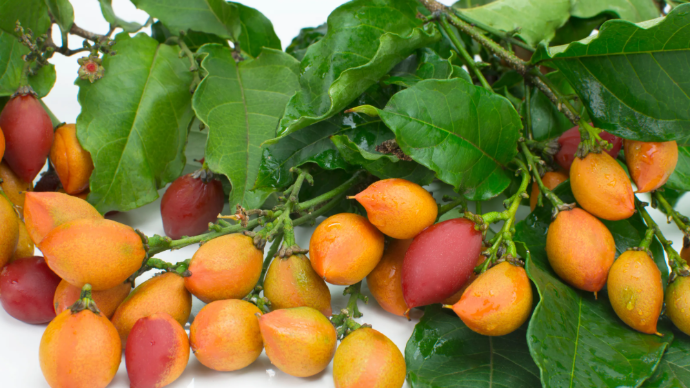Peanut Butter plant
Bunchosia glandulifera, or Peanut Butter Plant, is a tropical shrub or small tree growing 2–7 m, thrives in well-drained, loamy soil, full sun to partial shade, and produces edible, peanut butter-flavored fruits with traditional medicinal uses.

Habit
Shrub
Height
2–7 meters
Growth
Medium
Soil
Well-drained, rich loamy or sandy loam
Shade
Full
Moisture
Moderate to high
Edible
Yes
Medicinal
Yes
Origin
Tropical South America
Climatic Condition
Tropical, Subtropical
Temperature (°)
20–32°C
Humidity (%)
60–85%
Potting media
Loam, compost
Fertilizers
Organic
Watering
Regular
Plant Weight
800–1200 grams
Flowering Time
Late spring to summer
Soil Ph level
5.5-7.5
Water Ph level
6.0-7.5
Soil EC
1.0-1.3
Yield Per Plant
Moderate (100–200 fruits/year when mature)
NPK ratio
10:10:10
life Span
15–25 years
Health Benefits
High in protein, heart health
Suggested Grow Media or Potting Mix ?
50% loam, 25% compost, 25% sand
Suggested Fertigation/Fertilizers
Fertilize every 4-6 weeks with balanced fertilizer.
Common Diseases and Remedies
Brown or black lesions on leaves,Deformed leaves, honeydew residue,Bumps on stems and leaves,Larvae in ripening fruits,Yellowing leaves, root decay in poor drainage.
Brown/orange pustules on leaves ,Brown/black spots on leaves, Galls on roots, stunted growth, Curling, yellowing leaves, White powdery patches on leaves
Use neem oil or insecticidal soap sprays, Prune and dispose of infected leaves, Introduce beneficial insects (ladybugs, lacewings), Use garlic-chili spray for aphids and flies, Ensure good drainage to avoid root rot
Copper-based fungicide for leaf spot, Systemic insecticides like imidacloprid for scale insects, Spinosad for fruit fly larvae, Fungicides containing metalaxyl or fosetyl-Al for root rot

